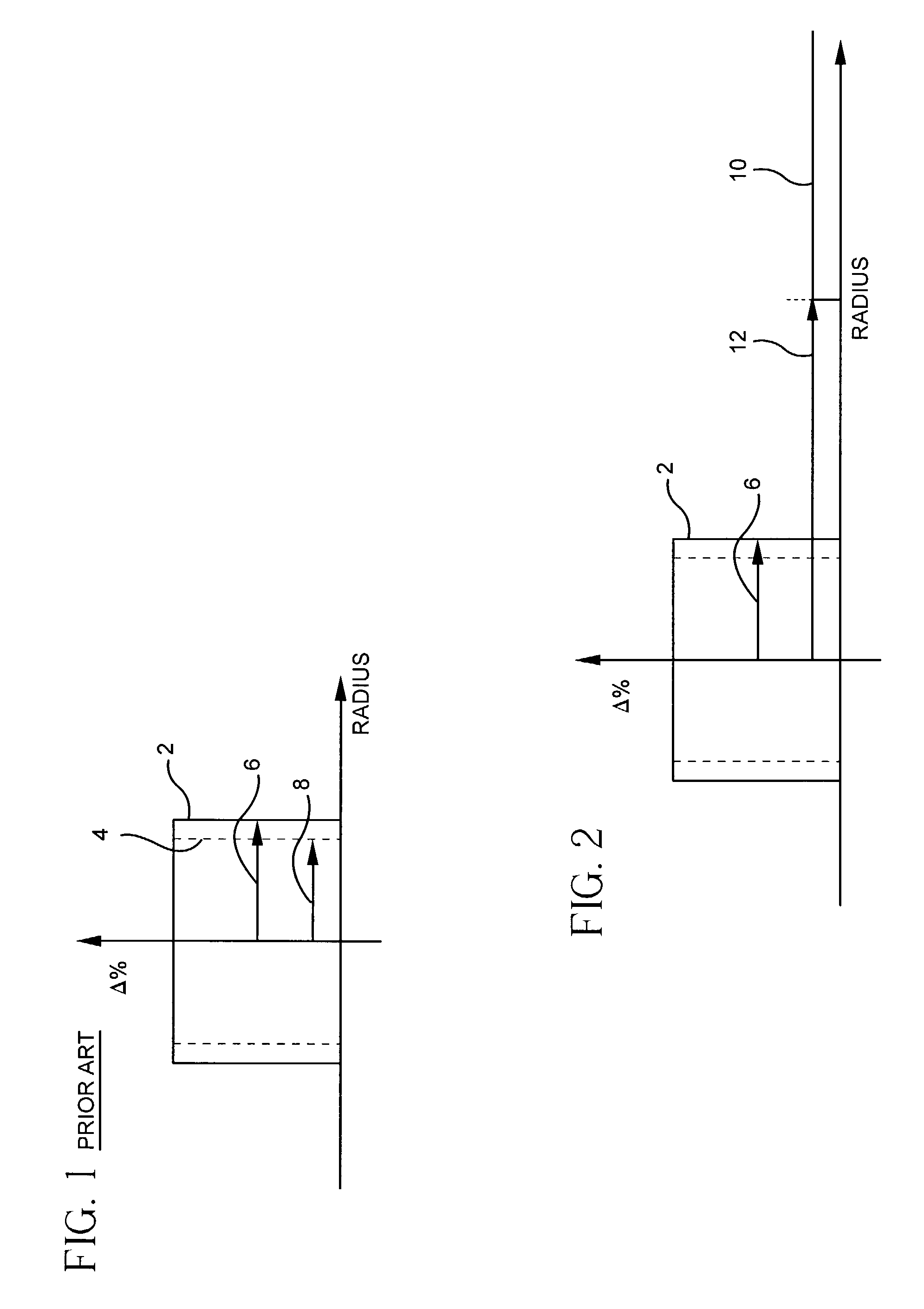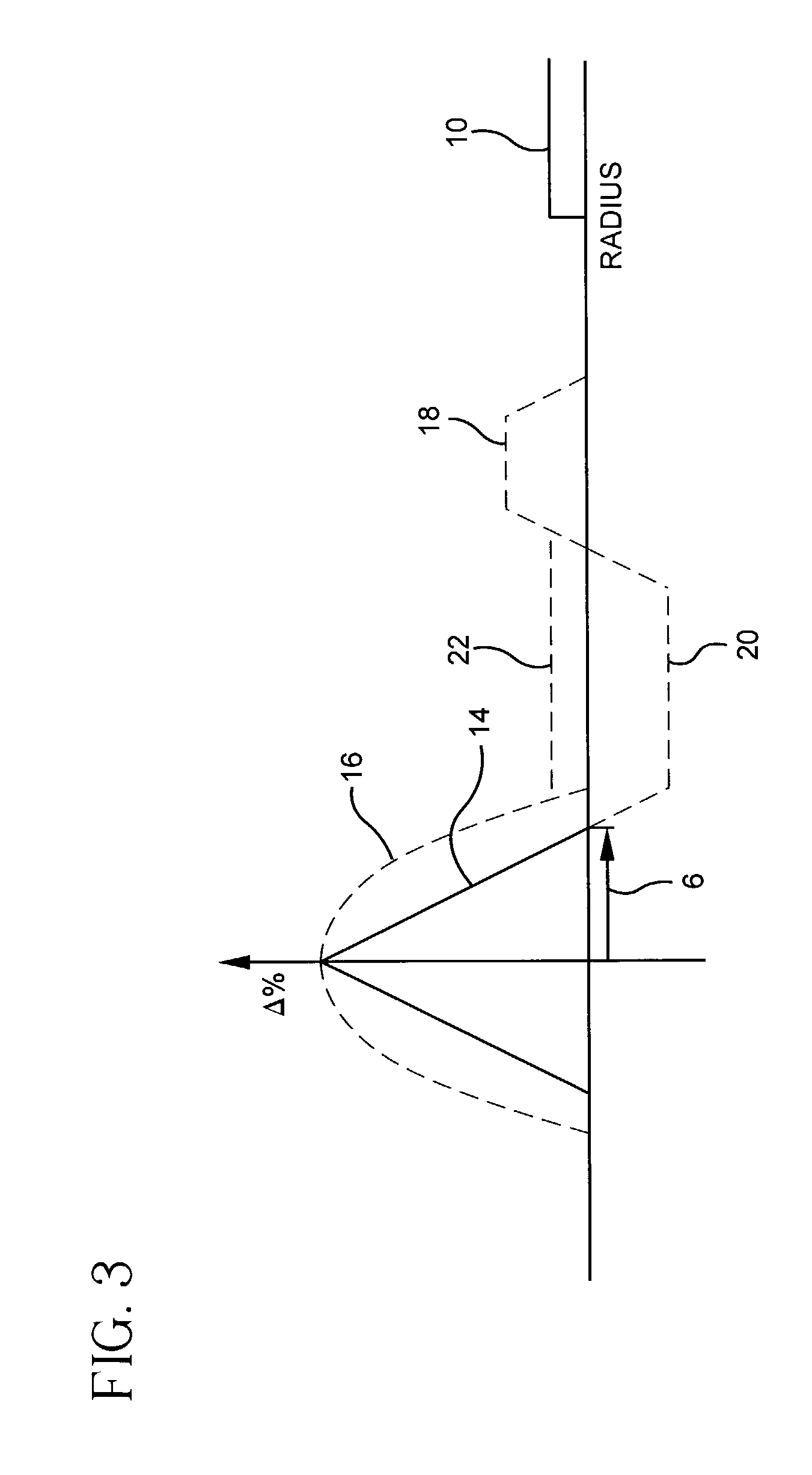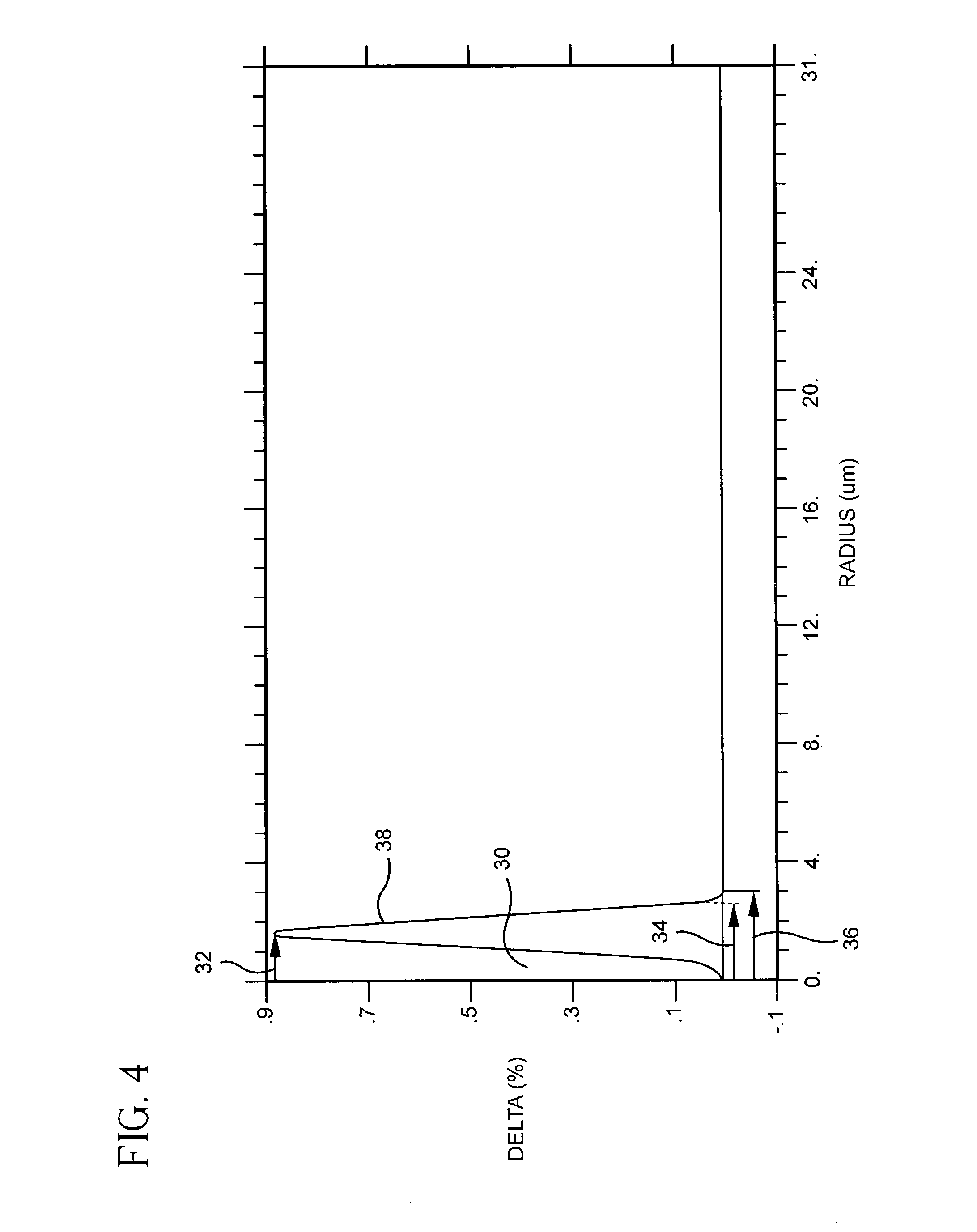Optical waveguide fiber for local access
a technology local access, which is applied in the field of optical waveguide fiber, can solve the problems of limited span length, increased impact of splicing and connecting on system installation, and maintenance cost, and achieves the effect of wide spectral width and convenient us
- Summary
- Abstract
- Description
- Claims
- Application Information
AI Technical Summary
Benefits of technology
Problems solved by technology
Method used
Image
Examples
Embodiment Construction
[0044]Reference will now be made in detail to the present preferred embodiments of the invention, examples of which are illustrated in the accompanying drawings. Wherever possible, the same reference numbers will be used throughout the drawings to refer to the same or like parts. An exemplary embodiment of the present invention is shown in FIG. 2. Step index profile 2 having radius 6, the profile being substantially identical to profile 2 illustrated in FIG. 1, is expected to have a cut off wavelength, i.e., the wavelength above which only the LP01 mode is propagated over fiber lengths of several kilometers, of about 1200 nm. (The cut off wavelength in general changes with changes in the physical configuration of the optical waveguide fiber, the effective cut off value decreasing as bending is induced in the fiber. The system performance of the optical waveguide fiber is advantageously described in terms of the cut off wavelength of the fiber in cabled configuration, the configurati...
PUM
 Login to View More
Login to View More Abstract
Description
Claims
Application Information
 Login to View More
Login to View More - R&D
- Intellectual Property
- Life Sciences
- Materials
- Tech Scout
- Unparalleled Data Quality
- Higher Quality Content
- 60% Fewer Hallucinations
Browse by: Latest US Patents, China's latest patents, Technical Efficacy Thesaurus, Application Domain, Technology Topic, Popular Technical Reports.
© 2025 PatSnap. All rights reserved.Legal|Privacy policy|Modern Slavery Act Transparency Statement|Sitemap|About US| Contact US: help@patsnap.com



